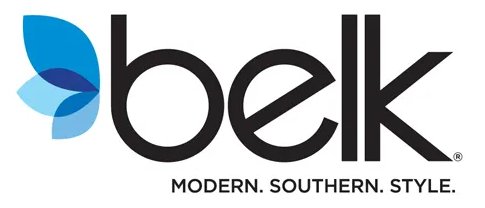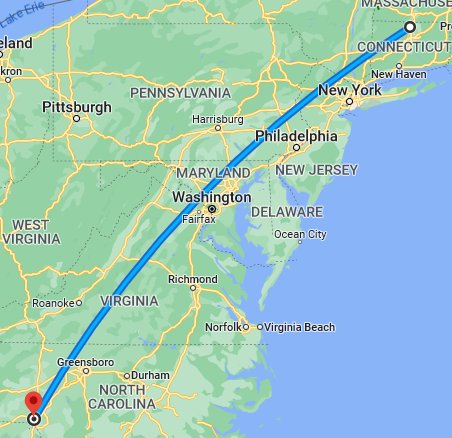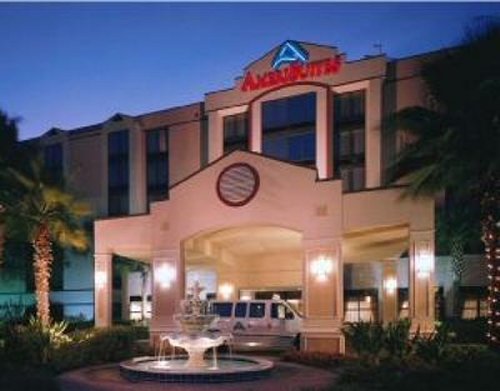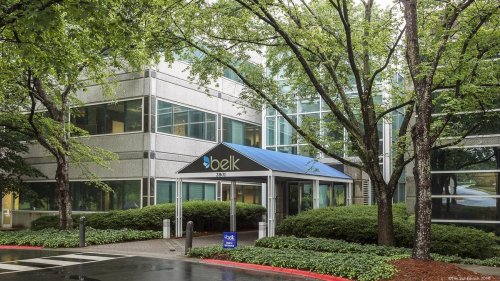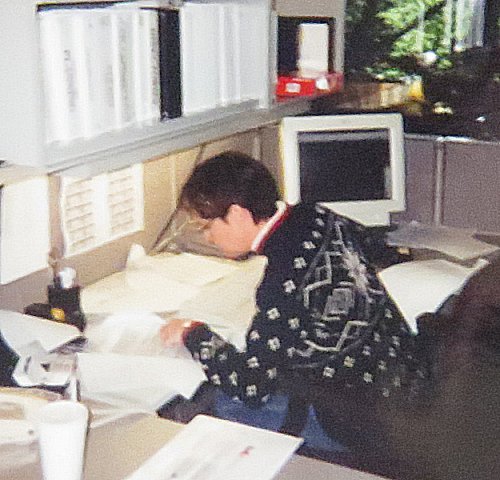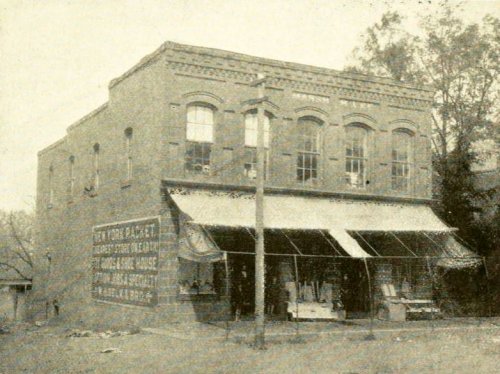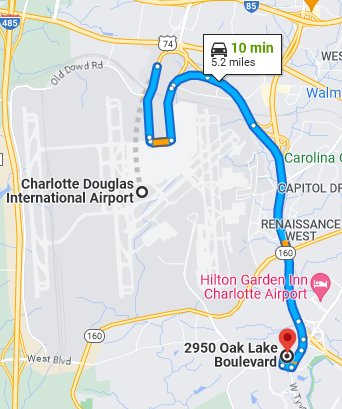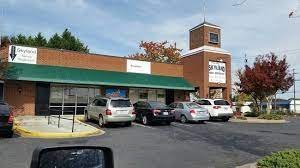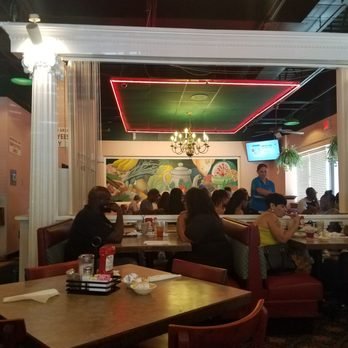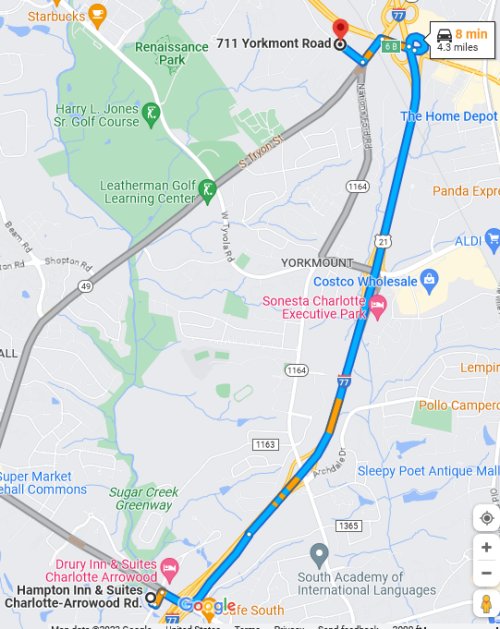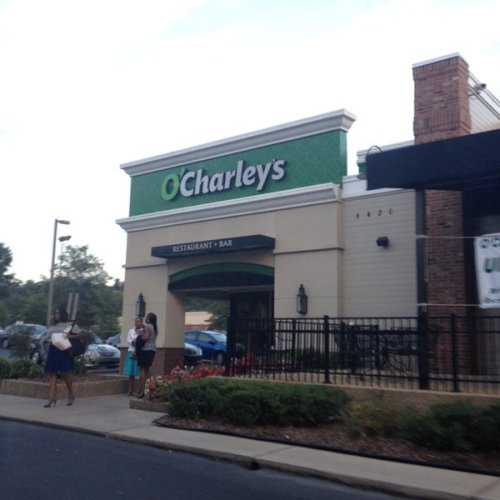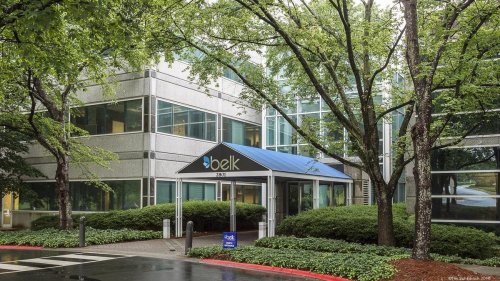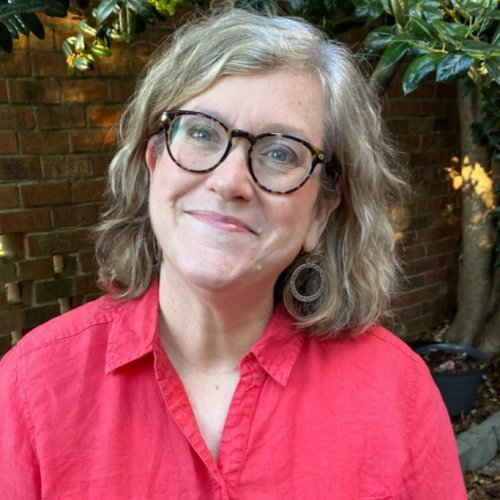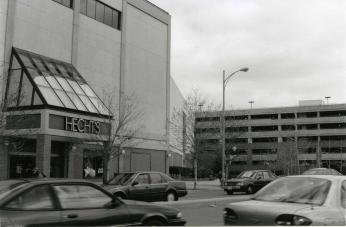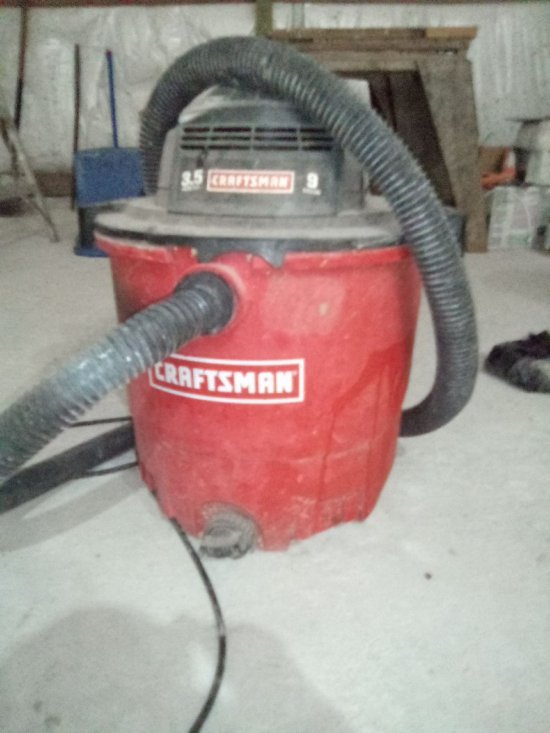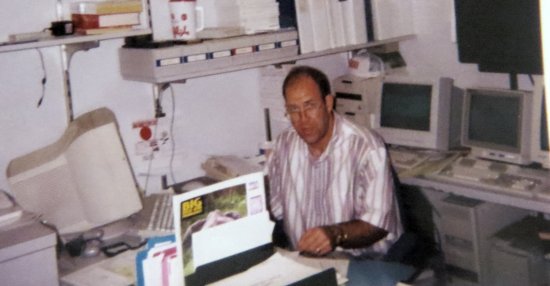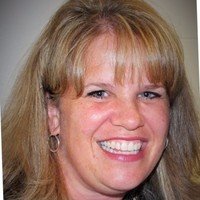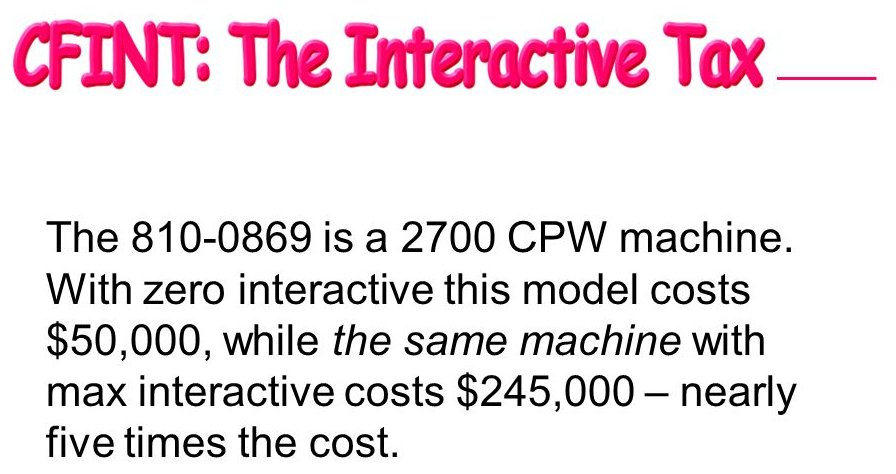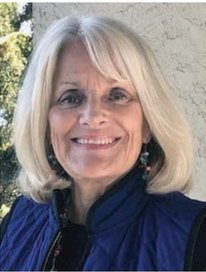A study in Charlotte. Continue reading
In the fall of 2002 I received a call from Bob Bowden, the IT Director at Belk, a chain of department stores that was (and still is in 2023) based in Charlotte, NC. He said that the company was closing its four regional divisions and bringing all the administration into Charlotte. He also told me that Belk was an AS/400 shop, and he was very happy to learn that we had developed software on that platform. He asked me to schedule a trip to Charlotte to demonstrate the system and to talk with the people in the advertising department. One of those people was Ellen Horn. I already knew Helen from the time that she was employed at Hecht’s (introduced here), but that was nearly a decade earlier.
This call was a godsend for TSI. The pool of prospective AdDept users had shrunk dramatically over the dozen or so years that we had been marketing the product to large retail advertisers. Moreover, our existing clients had at that point curtailed their desires for custom programming. TSI’s programmers were still busy, but the future did not appear as bright as before. Furthermore, we were without a marketing director, and our most recent efforts at mailings had turned up nothing. Best of all, Belk already had AS/400’s. Hardware costs would therefore be minimal, and we did not need to worry about convincing anyone of the critical importance of a relational database or the viability of the AS/400.
I immediately made arrangement in late October for a trip to Charlotte, a city with which I was somewhat familiar because of the time that I had spent there working with the Cato Corporation (introduced here). There were several direct flights on US Airways between Hartford and Charlotte.
I stayed—because of Bob’s recommendation—at the AmeriSuites hotel that was directly across the street from the headquarters building. Belk had a discounted rate there. The hotel had a shuttle service to and from the airport, and so I did not need to rent a car. That was fine for the first trip, but after the installation and the contract I rented a car so that I did not feel imprisoned.
I sent them a tape of the AdDept system and the sample data that I would use in the demo. Bob had told me that Belk had a nice theater in which I could make my presentation. People from the IT, Advertising, and Accounting departments would be in attendance. As usual, I spent the first day talking with users. In the morning of the second day I made adjustments to the demo system and tested everything that I planned to show.
Travel to Belk was easy. US Airways had several direct flights daily from Bradley International to Charlotte. Belk’s headquarters was a short drive from the airport.
I have been able to locate copies of fewer of my notes written for TSI’s employees, especially Denise Bessette, TSI’s VP of Application Development than I thought likely. I discovered notes from fifteen trips, as well as many outlines of programming projects. However, there are two big gaps in the notes that I brought back to TSI’s office. There are no reports dated between March of 2003 and December of 2006, and the last set is for February of 2009. I am almost certain that I made trips in 2004 and 2005, and I am absolutely positive that I visited Belk several times after 2009. Unfortunately, I have needed to rely on my memory for both of those periods.
Belk was unlike any other AdDept installation. The spacious and modern headquarters that stood in the midst of dozens of trees was about to be deluged with employees transferred from the other four divisions. It would undoubtedly be true that many of them would be superfluous in the consolidated setting. After all, cutting expenses, especially payroll expenses, was the usual motivation for the move. In the case of the advertising department, at least, the introduction of AdDept was bound to streamline many tasks.
One thing about the AS/400 setup at Belk really surprised me. Here is what I wrote:
AdDept resides on an AS/400 model 720 running V4R5. The system is also used for the Lawson accounts payable and general ledger systems and J.D. Edwards systems that are used for co-op billing and job costing. They hope to eliminate the J.D. Edwards system. They plan to upgrade the system in 2003. Dean Hajnas, who works for IBM, is the system operator for the AS/400. IBM manages the system for them. All requests for new user profiles and changes to user profiles must go through IBM. Belk employees are not allowed to touch the hardware.
That’s right; the Belk IT employees had absolutely no control over their own hardware. They had outsourced the management of the system to IBM. Quite a few IBM employees worked full-time in the Belk complex.
I met with a large number of people on the first visit, most of whom were new to me.
Ellen Horn’s title is media manager. Greg Case1 and Jennifer Lennon2 are ROP coordinators. I think that Bob Alexander3 is, too, but he was out. Debbie Edwards does broadcast, but I think that she works for Ellen. Steve Kelly4 is the Business Manager. Steve Yeager5, who is responsible for the massive network of spreadsheets, and Jan Adams work for him. I am not sure who is responsible for what. Tim Scott6, Miriam West (print production), Sherry Webb, and Amy Petrone attended the direct mail meeting. The last two run the data base marketing (Harte Hanks) system.
Ellen, Greg, Jennifer, and Steve Yeager have usable user profiles. They use PComm (like the May Company). They have one printer, which is everyone’s default – PRTA209. It was out of toner on Thursday.
The project manager for the AdDept installation worked in the IT department. Her name was Pat Cagle.7 If we needed something fixed in the system specs, the operating system, or the hardware, we dealt with her. She knew next to nothing about advertising.
I remember that on one of the first visits Pat gave me a form on which I was asked to describe the AdDept system. I tried to get out of it, but she insisted. I composed a few paragraphs and gave them to her. I never heard about it again. What we ended up doing probably bore little resemblance to my essay.
The headquarters building had quite a bit of security. Passage through some doors required an employee badge; others required special badges. When visitors first arrived, the receptionist made a badge for each person who had an appointment, but the visitor’s badge did not allow them to go through the secure doors, and they still had to wait for an employee to come down to the reception area to escort them. Anyone who went out had to go through this again.
The alternative—which I admit that I sometimes employed—was to wait for an employee to come in or out and sneak through before the door closed. I occasionally just stuffed my badge in my pocket. Nobody ever demanded to see it. I always turned the badge in at the security desk before going back to New England.
I learned a little about the company’s history. Belk at the time had more than 200 stores and used 180 newspapers. Their biggest markets were Charlotte and Raleigh. Their stores were also in a large number of small markets, including Mt. Airy, NC, Andy Griffith’s home town and the model for Mayberry. I later learned from Steve Yeager, who kept a copy of a book about the company’s history on his desk, that it was a privately-owned corporation dominated by men named Belk. Over the years they made partnership deals with other retailers, most of whom they eventually bought out. That part of the operation, which began in 1888, had ended, but there were still a sizeable number of high-ranking executives in the building with same four-letter last name. Belk had that, but almost nothing else, in common with the Cato Corporation.
I can find no notes for it, but I must have made another trip to Belk after the one in which I collected specs for the Design Document and the detailed proposal. I remember another meeting in the theater in which I demoed the AdDept system. It was attended by a Vice President in the Accounting Department. Although I no longer recall his name, he made quite an impression on me. When I mentioned that I would not be able to come to Belk on a specified date because I had minor dental surgery scheduled, he said that I could come anyway, and he would do the job in the evening. I asked him if amateur dentistry was one of his hobbies. He only smirked.
Later, when I talked about using a fax card on the AS/400 for insertion orders, he volunteered—with no prompting—a question about whether the Internet could be used for transmission of the orders. That was how the subject of AxN was first mentioned at the first retailer to use it in an operational setting! The design of AxN is described here. The story of its marketing begins here.
I undoubtedly stayed at the AmeriSuites that day as well. It might have been on that occasion that I had my first opportunity to eavesdrop on Italians speaking their native tongue. There were very few people at the hotel. When I went to breakfast, the hotel’s restaurant was empty except for a small group of Italian men. I was not very far along in my study of the Italian language (introduced here), but I was delighted at my success at following a substantial portion of the conversation of my fellow diners. My wife Sue and I by that time had already scheduled our first trip to Italy for May of 2003. That journey has been described here.
I remember trying to train the four ROP ladies from the divisions that had been discontinued. There might have been a fifth person supervising them. I made the long trek from the Advertising Department to the area that had been set aside for them. I have no records of any of their names, but I was required to give personalized training to each of them one at a time.
What is wrong with this picture? No, not the old photo; I mean the scene I depicted in the above paragraph. In the first place it surely would have been more cost-effective to have me conduct an ROP class that included all of them or, if that was not feasible, to train one person and let that person train the others. What kind of business pays an outsider $900 per day plus expenses to provide individual training for inexperienced clerks?
That was not the worst part. All of these ladies had moved to Charlotte so that they could continue doing the jobs to which they were accustomed. My training emphasized how fast ads could be entered and how fast and easy everything else was after that. The unfortunate result was that they all had to be comforted and assured that there would still be a place for them in the Belk organization. Maybe so, but I don’t think that it was in ROP.
I remember that shortly after these training sessions someone, perhaps Steve Kelly, asked me how many employees were required to manage ROP in other AdDept installations. I told him that it was hard to say because some also produced advertising schedules and some also verified charges from newspapers. However, I could think of no installation that had more than a couple of people.
By the time of my trip to Belk in February of 2003, data entry was in full swing, and I needed to make sure that everything was going smoothly.
It was sleeting on the evening that I arrived in Charlotte. I must have rented a car because I remember that the short drive from the airport to the hotel was horrendous. The roads had not been treated at all, and everyone was driving at less than 15 mph (and could not get up hills) or more than 50 mph (and was skidding this way and that). I was one of the few drivers on the Billy Graham Parkway who was doing a safe moderate speed. This kind of weather occurred at least once a year in New England. The temperature was above freezing; if the roads had been treated, they would only have been wet. Even if they weren’t, most New England drivers would compensate in a reasonable manner.
I made my way around all of the idiotic drivers to the hotel. There I found out that my reservation had been moved to another AmeriSuites hotel several miles away in Arrowood. When I protested, the lady informed me that the entire city was in a state of emergency. I got in my car and drove south to Arrowood.
The next morning I drove to Belk. I reported in my notes what I found: “Belk did not open until 10:30 on Monday because of ice on the roads. Many people came in later than that. Some key players did not make it in on Monday at all.”
I mused to myself that I should have driven down to Charlotte in a truck filled with salt. I could have made a fortune on the black market.
I accomplished very little on that trip. The only good thing about this trip was that I found a better hotel for future trips.
The first priority in 2003, of course, was to get all of the ads entered into the AdDept database for the season that started in February. The people in the Advertising Business Office tried to run parallel financial closings for February and March. I spent a lot of time creating queries for them/ I worked most closely with Russ Taylor8 and the controllers, Karen Pardue9 and Debbie Morris10.
Eventually this installation included many interfaces with other applications, most of which also running on AS/400s. The implementation of the first interface involved the uploading of quantities for their direct mail and insert pieces. There were several disconcerting entries about it in my notes from the March trip:
I wrote a program for handling the direct mail quantities file, a sample of which I did not receive until Tuesday. It is DN172, which is option 1 on BELKDM.
I wrote instructions for uploading the quantities file and sent them to Steve Kelly, Steve Yeager, and Pat Cagle. Steve Yeager forwarded his copy to Tim Scott.
Tim Scott said that it takes six hours to run the query to produce one file for a month which shows direct mail quantities by store by month. Tim and his two employees cannot use the system while the query is running! As of Friday, there were still no quantities.
Belk must come up with a process for getting the store quantities file to the IFS. They do not have Client Access.
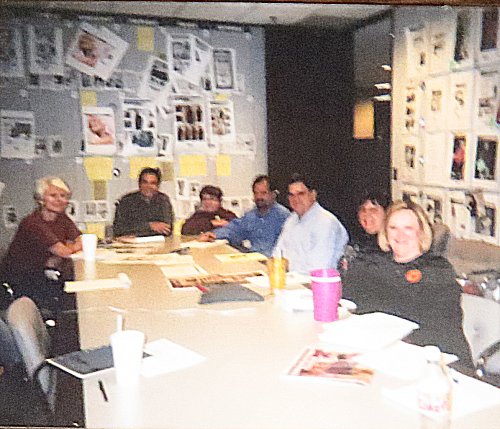
Client Access was an IBM program that provided both terminal emulation and the ability to transfer files from or to a PC client. IFS stands for Integrated File System. Version 4 of the AS/400 operating system provided for storage of several types of files, including PC files, on the system. I cannot imagine a query on the native file system of an AS/400 taking hours. This is what the system does best. I wonder what system Tim Scott’s program was on.
I found nine files that contained lengthy outlines of closing issues that were dated April 15 through 17 of 2003. I evidently spent a week at Belk trying to close to close February and March in AdDept. There were still a lot of open issues on both files for Friday.
In May there are five .prn files (probably output files from queries on some system) that are labeled “Your CoQuery Mabelk”. They appear to have one line per store. I have no recollection about any of them, and the formats do not look familiar.
There are no other files of my notes until 2006. I cannot explain the gap, but there was a huge change in attitude when Denise Podavini11 took over management of the Advertising Business Office in December of that year.
My notes from the visit in December of 2006 are fragmentary, but I also found several documents dated in that month in a folder called “Month End” in the Belk folder. Two of them were FAQs. The first, which was less than a page in length, explained the steps involved in setting up store allocation percentages for each pub in every media. The second, which was a little longer, explained how AdDept approached the challenge of allocating costs to stores. I have posted it here.
The others were specific “game plans” for Belk. One was a nine-page document that outlined the procedures for allocating all advertising costs at Belk. It had five “tracks”: I have posted this impressive document, which includes a few action items, here. The other two dealt with the difficult but critically important (but uncomfortably complex) process of making sure that all of the systems and processes involved were in sync. They have been posted here and here.
I should emphasize two things. 1) The processes described in these documents required that all ads in all media and all expenses and credits be recorded in AdDept. 2) All of the interfaces between AdDept and the other systems must have already been designed, constructed, and at least to some extent tested. Therefore, a great deal of interaction between Belk and TSI must have occurred in the years between 2003 and 2006.
At any rate the pace definitely picked up speed under Denise’s leadership. The January 2007 meeting involved a new project called the Printer-Shipper Report. Vee Hefney12 and Kari Bates13 produced this report in order to indicate to the printers and/or shippers the quantity of copies of each direct mail or insert piece to be produced and delivered. TSI had already delivered AdDept’s version of this report, but on this trip I gathered specs for changes to it, for a method of automating delivery of the information to the advertising records area, and for several related projects.
Special events was usually the last area of an advertising department that I dealt with. The people there managed unique in-store promotions like celebrity appearances and trunk sales by vendors. During the July visit to Belk I met with Leigh Ann Lyle, Rochelle Franklin15, and Bridgett Barbee15, who were involved with this area. Sixteen years later I can summon forth only a dim recollection of these meetings.
I also spent a lot of time with Denise Podavini on this and every other visit. I returned to the office with a fairly long list of requests. By this time we had produced forty-two programming quotations for Belk in addition to those listed in the Design Document and initial proposal. Most of the quotes had been accepted, delivered, billed, and paid for.
The October trip was notable for two things. It was the first mention of the application that someone had developed for managing vendor contracts in Lotus Notes17. Sanjay Singh18, an IT employee, said that he would provide the layout of a file that we could import into AdDept. The other notable item was that the top item on the to-do list was Belk’s fifty-ninth request for custom programming.
My visit in May of 2008 centered on co-op. The fact that I still needed to do setup work in this area five years after the installation puzzled me when I researched it. Perhaps the use of the Lotus Notes program for co-op contracts affected the progress. Although several problems were uncovered, we must have dealt with them. The last line on my update report is “Everyone was very appreciative of the work. They can definitely see the value of this project.”
We did not receive requests like the following every day:
The Lotus Notes database will at some point in the not too distant future be replaced with something. So, they would like the BELKLNI menu to be called BELKCOOPI, and they would like all references to Lotus Notes to be changed to co-op contract database or something like that.
By this time Belk had acquired most of the Parisian (introduced here) stores. TSI had to deal with several problems involving the transition.
I made two trips in June. The first one dealt mostly with issues in the interface with the co-op contract database. I also spent a fair amount of time cleaning up the co-op transactions and reconciling the co-op accrual entry for May. Denise P. and I had to make several changes to the .csv file for the journal entry to be uploaded to Lawson. The last entry in the notes for this trip had very good news.
I ran the actual cost accounting by store for February through May in order to check the results of DACAJOBST. I could not find any problems. In all cases the total media and production costs seem to match and the store breakdowns seemed reasonable.
I came back later in the month to help with the reconciliation of co-op for June. The list of open issues after that visit contained only five items, and three of them were requests for new programming.
The topic for the first visit in September was the merchandise cost accounting system, which required another interface with the sales system. This one was for sales by department by month. It was very challenging to try to reconcile the results of the merchandise allocation program with the results of the program that allocated costs to stores. I don’t think that I ever attempted this at any other installation. Nevertheless, after quite a number of adjustments, I reported that “July matched the store cost accounting in media, production, and co-op.”
The last entry on the Issues page of my notes was short but powerful: “I got the specs for a gigantic use tax/sales tax18 project.” My write-up of the project’s specs can be found here.
I came back the next week to help finish the cost accounting reconciliations and discuss the details of the use tax project. Denise P. needed something to address the immediate problem of calculating the use tax liability in each jurisdiction.
I wrote five queries in ADVQRY for Denise P. so that she could estimate their use tax liability for this season.
BOOKS092 creates a file with all direct mail and insert ads that have printing costs. It must be run first.
BKMED092, BKPOST092, and BKOTH092 calculate the costs for media, postage and other for all the ads in the file created by BOOKS092. The results are stored in files.
BKALL092 ties the four files together to print the report.
I think that this was the first time since the Amtrak rides to Macy’s East back in the eighties that I visited an AdDept client on two consecutive weeks.
The use tax project was installed in January of 2009. It seemed to go pretty well. One issue that was reported exemplifies how complicated this project was.
Request #9519 stated: “At month end, if the ad ran in that month or a previous month, the sales tax amount will be moved to the (liability) account specified on the sub-account. Thus, sales tax will be treated like every other sub-account.” This is not quite correct. They will have one sales tax sub-account, but there are sales tax liability accounts for each store. One store’s account will be associated with the state. The amount should NOT be allocated to stores when the month end program is run. Instead, a store should be specified on the sub-account, and 100% should go to that state.
I also spent more time reconciling the store and departmental cost accounting. At this point they were using both of them extensively.
Of course, they needed to project the cost of use tax when they were planning. The last entry for the visit was this question to Denise B.: “Denise P. needs the projected use tax for her reports. Is that ready? She hopes to have the projected costs by store the first week of February.”
The last file of notes that I have is dated at the end of February, 2009. I am almost positive that I returned to Belk several times after that, but I have no record of any of those trips.
At some point after this Denise P. told me that Belk planned to outsource the buying of newspaper space. I told her that this would have a dire, perhaps even catastrophic, effect on TSI’s financial position because most of their papers subscribed to AxN, and very few of them were used by any other AdDept client. She asked me how much money we would be losing. I told her. I was shocked when she promised to make up the difference. Evidently they expected to save a lot of money—most presumably in payroll—by outsourcing.
I didn’t think of it at the time, but this demonstrated quite a different point of view from when Belk promised to keep all five of its ROP coordinators back in 2003 and gave each of them personalized training in how to use AdDept to schedule newspaper ads.
Life in Charlotte: I happened upon a restaurant that I really liked called Skyland Family Restaurant. It was near one of the major north-south streets, South Blvd., but it was facing a side street. I drove past it once or twice even after I knew where I was going. After I discovered Skyland, I went there at least once on each trip. I am happy to report that it still seemed to be open for business in 2023.
The restaurant was owned by a Greek family. Everything that I ever ordered there was abundant, good, and inexpensive. My favorite was the pork chop meal. They also provided free refills on iced tea.
Several interior walls of the restaurant contained large water-color paintings that depicted unusual things. I am sure that I took some photos with my Canon point-and-shoot camera. However, I could not find them. The photo at the left is from the Internet.
I always ate by myself, and it was never very crowded. I suspect that they did more business at lunch time than in the evening. While waiting for my order I usually read something, usually the latest issue of Acquerello Italiano.
One occasion in 2008 stands out among my memories. A group of men were meeting in the back room, which was to the left of the area visible in the above photo. They were discussing in a serious and energetic manner what they could do to help Congressman Ron Paul of Kentucky win the Republican nomination for president. I had heard of Ron Paul, of course, but I did not take him seriously. Subsequently, I came to understand that he was a heroic figure to many Libertarians.
I went to several other restaurants. I have no complaints about any of them, but for me the experience at Skyland was both unique and very enjoyable.
After the first trip I always rented a car. I stayed at the AmeriSuites a couple of times and at Hyatt Place—also within walking distance of Belk’s headquarters—at least once. I went for a run almost every evening that I was in Charlotte. On the occasions that I was near Belk’s headquarters I ran around the park-like complex in which Belk was located and along the major road to the southeast of it, West Tyvola.
For most of my later visits the Hampton Inn in Arrowood, a neighborhood about five miles south of Belk, was my base. Even if it had not offered both free breakfasts and Hilton Honors points, I would have preferred it. The rooms were nicer, the service was better, and fairly often they had some free food in the evenings. It only took me ten or fifteen minutes to get to Belk, and there were some good places to eat in the vicinity.
I ran around a business park that was less than a block from the Hampton Inn. It wasn’t as nice an experience as running in a real park, but it sufficed for my purposes.
The only other type of recreation in which I participated was bridge. On one evening I played with Denise’s father20 at the Charlotte Bridge Club. I am pretty sure that it was in 2010 because I remember that I had just become a Live Master. We had a mediocre result. I made a few mistakes.
He told me that Denise never had any interest in the game, but he was teaching her daughter how to play. He also mentioned that he knew Simon Kantor, whom I had once played against back in New England.
The Work Environment: The headquarters building was spectacular. The most annoying thing, as I described above, was dealing with security. The parking lot was huge. I usually got there early enough to take one of the slots reserved for visitors, but if they were full, I might need to walk quite a distance from my car to the front door.
It was also a pretty good hike from the advertising area to the cafeteria and the IT area, but I did not need to make those trips more than once per day. The cafeteria was worth the trek. The food was quite good, as was the selection. The prices were quite reasonable.
Once on nearly every trip Denise P. and I would go out for lunch. I always paid and billed it back to Belk. Her two favorite places were O’Charley’s and a Chinese restaurant called Dragon Buffet.
O’C’s was OK, but DB was my favorite because they allowed diners to serve themselves and take as much as they wanted. I generally had consumed two bowls of Won Ton soup and then some ginger chicken wings. I think that there were also free refills on iced tea.
These were all legitimate business lunches. There was no booze, and Denise and I talked about almost nothing except business. As soon as we had finished eating we returned to the office.
Back in 2003 I cannot say that I had a lot of respect for the people with whom I worked at Belk. However, after Denise P. was brought in, my opinion improved a lot. It may be that she sheltered me from some people who might frustrate me.
One peculiar thing that I remember about the advertising department was the fact that Ellen Horn always had a Golden Retriever in her office. Evidently she was training them to be emotional support dogs.
There also seemed to be a paucity of printers. I remember that on quite a few occasions I walked a considerable distance to pick up a report and then had to wait for someone else’s job to finish. When I was doing reconciliations, I often needed small reports fast. This was frustrating.
Epilogue: Belk survived intact longer than almost all of the regional department store chains with whom TSI dealt. However, in 2016, a few years after my last trip to Charlotte, the company had redesigned its headquarters. Because I always thought of Belk’s digs as better than any of the other department stores, this news surprised me. Imagine my shock when I read that in 2021 Belk decided to close this location entirely. Evidently they expect most people to work remotely and some to be stashed away in stores. I don’t understand how this could possibly work. Where, for example, are the computers?
That last decision was not made by the Belk family. In 2015 the company was acquired by Sycamore Partners. For the first time ever it would be run by someone not named Belk. The new CEO was not even a man!
On January 20, 2021, Belk declared bankruptcy, but the next day it emerged with an approved plan. This website claimed that in May of 2023 Belk still had 294 stores. That seems incredible to me. I wonder how many of those are “outlets”.
1. According to LinkedIn Greg Case still was working for Belk in 2023, as were quite a few of the people whom I could locate on LinkedIn. His profile page is posted here.
2. Jennifer Lennon’s LinkedIn page is here.
3. Bob Alexander’s LinkedIn page can be viewed here.
4. Steve Kelly’s LinkedIn page is here.
5. For the first part of the installation I worked with Steve Yeager a lot. I remember that he said that he was originally from somewhere in Massachusetts. I am not sure how he ended up in Charlotte. I also remember that he had a fancy car of some sort (as opposed to my ten-year-old Saturn). He told me that he liked the way that he looked in it. I found Steve’s LinkedIn page here.
6. Tim Scott’s LinkedIn page is here.
7. Pat Cagle’s LinkedIn page can be viewed here.
8. I had not encountered anyone like Russ Taylor. Someone once asked him if he had graduated from the University of South Caroling. He answered solemnly, “Yes, I am a cock!” He also used to sneak out every so often for a cigarette break. His LinkedIn page is here.
9. I worked with Karen Pardue on virtually every trip until she moved to another position. Her LinkedIn page is here.
10. Debbie Morris assisted Karen Pardue. In 2008 she assumed management of co-op. Her LinkedIn page is here.
11. TSI had a long and productive relationship with Denise Podavini, who was born and raised in New England. I found her LinkedIn page here. It still lists her as directing the financial aspects of the advertising department, but I wonder if, given the drastic changes at the company, that is still accurate.
12. I remember Vee quite well. I briefly met with her on several trips. Her LinkedIn page is here.
13. Kari Bates eventually took over Vee Heffney’s job. Her LinkedIn page is here.
14. Rochelle Franklin’s LinkedIn page can be found here.
15. Bridgett Barbee’s LinkedIn page is available here.
16. I was mildly amused to hear at one of the later meetings that the IT people, or more likely employees of an ambitious software vendor, were investigating the feasibility of replicating in Lotus Notes what AdDept did. IBM had purchased Lotus Development Corporation in 1995, primarily to get its hands on Lotus Notes, a product designed to make it easier for workers to collaborate. I had done a little research on that software. I could have told them that they would be crazy to try to use it as a comprehensive multi-user database. They would be sending a boy to do a man’s job. After a few months they came to the same conclusion.
17. Sanjay Singh’s LinkedIn page is here.
18. According to Denise P., nearly every jurisdiction expected Belk to pay use tax on certain aspects of the cost of creating a direct mail catalog or an insert. The rates and what portion was taxable varied by jurisdiction. It seems incredible to me in retrospect that this had never been an issue in the previous six and a half years of the installation at Belk, and—even more mind-boggling—no other AdDept client had ever mentioned this issue. I have no idea how this could be possible. Almost all of the AdDept clients were in precisely the same business as Belk, and most used direct mail as much as Belk did.
19. I am pretty sure that we quoted and delivered more programming requests for Belk than for any other client. The request numbers were well into three digits when we closed TSI in 2014.
20. I think that Denise P.’s father’s name is David Wroblewski. I searched the American Contract Bridge League roster for players in Charlotte with lots of masterpoints and a Polish name. His was the only one.

